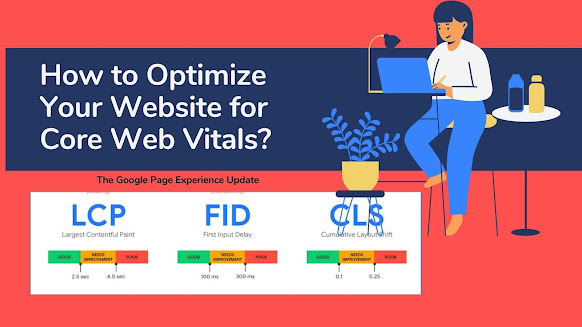Why Core Web Vitals Play Crucial Role in SEO Strategy
What Are Core Web Vitals?
Core web vitals are standardized metrics that Google uses which help developers assess a user’s experience of a web page. Primarily intended for use by developers, they can be used by all site owners to better understand how people experience their site in the ‘real world’. The three main core web vitals are LCP, CLS, and FID.
Largest Contentful Paint (LCP): This metric measures how fast a page loads content. The speed with which a page displays images, text, video etc. has a significant impact on how users experience the page. Sluggish load times have been observed by Google to negatively affect engagement and conversion rates. Anything over 2.5 seconds is considered slow. Pages that load faster than that receive higher ranks in Google’s search results.
Cumulative Layout Shift (CLS): This is a measure of the extent to which elements on a page will move, ‘shift’, from their starting position after the page has loaded. In short, a page’s visual stability. Users are likely to get frustrated when elements such as links bounce around the page, for whatever reason. A CLS of under 0.1 is generally desirable.
First Input Delay (FID): This metric assesses any latency between a user interaction and the browser’s response. An input (such as clicking to exit an intrusive interstitial) may take a fraction of a second to perform. The browser, however, may take longer to register and execute this command, depending on how the elements of the page may or may not cause a delay. Unlike the other core web vitals, FID depends to a large extent on the hardware your users experience your site on, and their internet speed. If your site’s mobile friendliness is weak, you may struggle to get a high FID score.
The Google Page Experience Update 2021
It is important to note that while core web vitals are a contributing factor to a site’s performance on SERPs, they are not the only metrics by which a user’s page experience is measured. There are approximately 200 ranking factors by which Google measures a page. Page experience is just one of these, and is made up of multiple elements besides core web vitals, including:
Mobile-friendliness
HTTPS (is your website using a more secure protocol)
Absence of interstitial popups
Safe-browsing (i.e. the absence of malware)
All this is to say that while it is a good idea to improve your site’s page experience signals, for the SEO bump as well as to make your site easier and more pleasant for visitors to navigate, you shouldn’t expect your site to immediately rocket to the top of the SERPs because you optimized images on your old pages. That said, there is a definite advantage to optimizing your website to improve core web vitals and other page experience signals, and you don’t want to let your competitors steal a march on you by optimizing where you don’t and potentially leapfrogging you in the SERPs.
Also Check: Best SEO Firm in Los Angeles
How to Optimize Your Website to Improve Core Web Vitals?
You can improve your site’s core web vitals in multiple ways. LCP is perhaps the easiest to track: Google PageSpeed Insights is a handy tool that will tell you each page’s LCP score. You can cut down on load time for factors such as large images by implementing a content delivery network (CDN) that will help your pages load faster. You can also implement ‘lazy loading’ (loading only the part of the webpage that appears in the browser) so that the initial load is quicker, reduce the number of third-party scripts running on your page, and upgrade your web host. Reducing the number of scripts on your page can also improve your FID, as can minimizing or deferring JavaScript. A browser cache will also help your site load content faster, which will have knock-on effects for the scripts you are running. CLS can be harder to monitor, but what you can do to try and improve stability is use set dimensions for media such as videos, gifs, infographics etc. Similarly, if your site incorporates ads, make sure that they have a reserved space on the page and do not suddenly appear and shove content around the page. This can even mess up user input sometimes, resulting in misclicks on ads. Another tack you can try is if you are implementing new UI elements, try and ensure that they are incorporated ‘below the fold’, so that they don’t push down expected elements of the page.
Core Web Vitals Consultant Los Angeles
The team at Noxster SEO is happy to consult on optimizing your core web vitals, or any other aspect of your website. We have helped numerous businesses improve their website performance, including the core web vitals score, in preparation for the Google update rollout. We help businesses of all sizes refine and develop their web presence in order to present their best face to their target demographics, be they B2B or B2C. If you are interested in our services, please get in touch with us through our webform.



